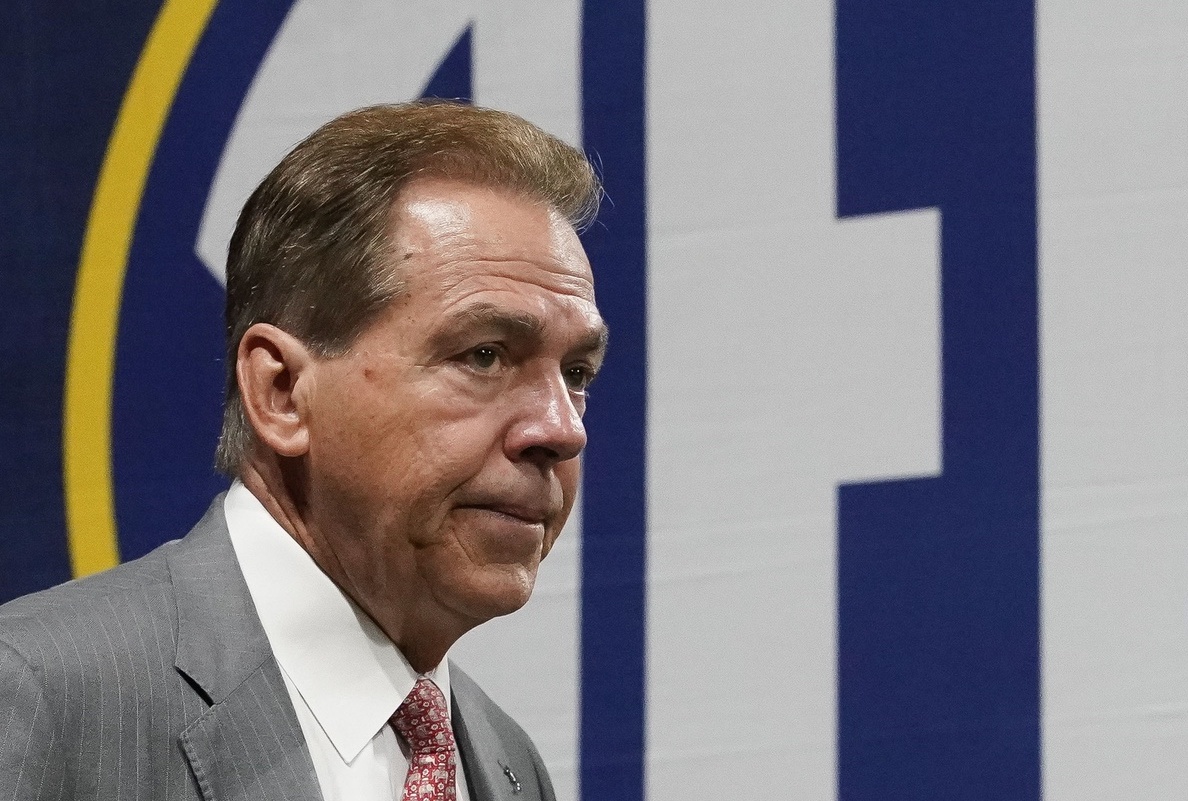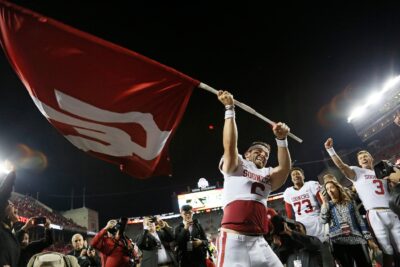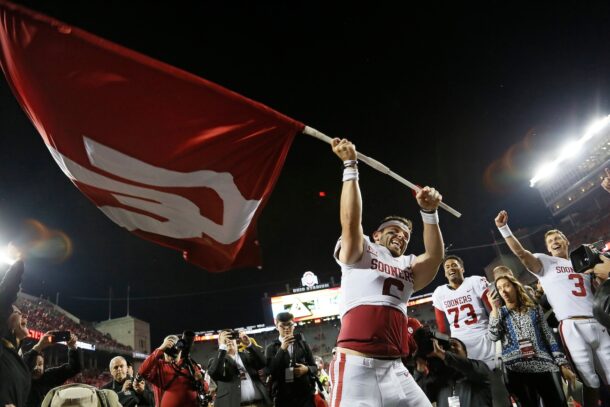
O’Gara: Is Nick Saban’s successor destined to fail? Here’s what history says about replacing a legend
Teddy Roosevelt famously said that comparison is the thief of joy.
Surely Roosevelt wasn’t referencing how college football fans should feel about a coach who succeeds a legend. If he was, well, he had more of a level head than most.
Replacing Nick Saban at Alabama will be an undertaking unlike any in college football history. At a place where he won 6 rings and went to 9 national championships in his final 15 years on the job, Tide fans have been spoiled. They’d be the first to tell you that.
Because Saban’s final season included another SEC title and a Playoff berth, this won’t be the same case where a past-his-prime coach is replaced by someone who injects new life into it. Saban, even at 72, was still on top of his game. He won 3 SEC titles in his final 4 years. Granted, he also closed with the first 3-year stretch without a national title since he arrived in Tuscaloosa.
The dynasty is dead!
On second thought, let’s not say that. Let’s instead say that the Saban era is over and a new one is here. Before Alabama announces a hire, let’s dig into what history says about being “the guy after the guy.”
Replacing Bear Bryant at Alabama was … brutal
Ray Perkins took on the challenge of replacing the retired Bryant, who was then considered the greatest coach of all time. That proved to be an impossible task. Perkins did actually keep the ship afloat in Year 1 with an 8-win season (matching Bryant’s final season), but he followed that up with Alabama’s first losing season in 27 years, and without an SEC title to speak of at the end of Year 4, he left Tuscaloosa to take over the lowly Tampa Bay Buccaneers. There wasn’t any grace for Perkins as a former Alabama player.
The irony is that before Perkins took over for Bryant, you could argue that he played a small role in setting the table for the Nick Saban era. Before Perkins returned to Alabama to take over for Bryant, he was the New York Giants head coach. He hired the likes of Bill Parcels and a 20-something Bill Belichick, who would later hire Saban as his defensive coordinator for the Cleveland Browns.
But no, the late Perkins will be remembered more as the guy who was put in an impossible position. It took a decade after Bryant’s retirement (and death) and 2 more coaching hires for the Tide to win another national title.
Frank Solich wasn’t Tom Osborne, which led to a firing that still haunts Nebraska
This might be the single best reminder of how hard it is to replace a legend. Osborne walked off a national champ after the 1997 season and turned the program over to Solich, who had played at Nebraska for Bob Devaney and coached as an assistant on Osborne’s staff for 2 decades.
Year 1 was rough by Nebraska standards. Solich suffered the Huskers’ first 4-loss season in 30 years. But immediately, Solich bounced back by ripping off 3 consecutive top-8 finishes with a 33-5 record. He took home national coach of the year honors in 1999, and his offense not only led to Eric Crouch winning a Heisman Trophy in 2001, but he got Nebraska to a BCS National Championship berth, too.
Solich should’ve been the answer. Instead, a 7-7 season in 2002 changed his public perception. The program’s record streak of 348 consecutive weeks in the AP Poll came to an end, and when Nebraska went 9-3 and was out of the Big 12 title hunt in 2003, Solich was canned. Never mind the fact that he actually won more games in those 6 seasons (58) than Osborne (55) and Devaney (53) did in their first 6.
The move still haunts Husker fans who have watched the following coaches fail to earn a single top-10 finish:
- Bill Callahan, 27-22, fired in Year 4
- Bo Pelini, 66-27, fired in Year 7
- Mike Riley, 19-19, fired in Year 3
- Scott Frost, 16-31, fired in Year 5
- Matt Rhule, 5-7, TBD
Now, the Huskers are still searching for their first bowl berth since 2016 and are searching for its first win vs. an AP Top 5 team since … 2001 with Solich.
The Steve Spurrier-to-Ron Zook transition couldn’t have gone much worse
When Spurrier announced he was leaving at the end of Year 12 in Gainesville, it sent shockwaves through the college football world. Tennessee spoiled Florida’s path to a national title in the regular-season finale — a game that had a different kind of buzz because of the stakes and it was rescheduled after 9/11 — but a beatdown of Maryland in the Orange Bowl felt like Spurrier was still at the top of his game. His subsequent move to the Washington Redskins left the Gators with a monumental hole to fill.
Hiring a former Spurrier assistant like Zook made sense, but in reality, nobody could step in and run the offense that Spurrier did. The Gators’ offense regressed by 2 touchdowns per game that first season. Even though it eventually became a top-20 unit by Year 3 with Zook, the hay was in the barn. A 7-5 season was all she wrote for Zook, who was never a popular hire.
Bob Stoops and Urban Meyer reportedly were the other candidates to replace Spurrier. Ultimately, Meyer had much more success replacing Zook than Spurrier.
Speaking of Meyer …
Sticking with Florida, Urban Meyer to Will Muschamp wasn’t much better
There was hope that when Meyer suddenly stepped down for health reasons (for real that time) a former Saban assistant would be an ideal fit to keep up with emerging Alabama. Instead, Muschamp replacing Meyer felt similar to Zook replacing Spurrier. A defensive-minded coach struggled to field competent offenses that were nowhere near the level that Florida fans grew accustomed to watching in the 1990s and the latter half of the 2000s under Meyer.
Even when Muschamp led a top-10 finish in 2012, the Gators didn’t even have an offense that ranked in the top half of FBS. That year included the infamous Louisiana-Lafayette game, wherein the No. 7 Gators needed a touchdown in the final 2 minutes to tie the game, and a game-winning punt return in the final seconds helped Florida avoid overtime.
Muschamp’s recruiting was second to none. He signed a pair of top-3 classes in his first 2 full cycles. But after his offense floundered again in Year 3 with the No. 114 scoring unit that led to a 4-8 record, he was on every hot seat in America entering Year 4. A 5-loss season didn’t save him.
Go figure that Muschamp was tabbed to replace Meyer at Florida and Spurrier at South Carolina … and didn’t last longer than 5 years at either. He had 2 winning seasons in conference play in 9 years as a head coach.
Luke Fickell* after Jim Tressel resigned
We always seem to gloss over Ohio State’s 2011 season with Fickell, who was named the interim coach after Tressel resigned. The Buckeyes were a disaster after Tressel resigned in May of 2011 following his lies to the NCAA for the “TattooGate” investigation. Fickell was only the interim coach, so perhaps it’s not fair to include him on this list. It’s not like he got to hire a staff and do all of his own recruiting.
The Buckeyes were facing 5-game suspensions to 5 key players, including starting quarterback Terrelle Pryor, who opted for the NFL Supplemental Draft instead of staying to play in the latter half of his senior season. As a result, the Buckeyes got off to a 3-3 start that culminated with their first losing season since Year 1 of the John Cooper era in 1988.
Fickell didn’t get to keep the job, which ultimately went to Meyer, but he eventually became one of the best coaches in the sport at Cincinnati, and currently at Wisconsin.
Even Ryan Day is struggling with replacing Urban Meyer
As awkward as Meyer’s exit from Ohio State was — let us never forget his weekly apologies for his handling of the Zach Smith situation — we need to be reminded why Jim Harbaugh said that famous comment about Day. As in, “sometimes people standing on third base think they hit a triple, but they didn’t.”
Day’s first and only win against Michigan came in Year 1 in 2019. They didn’t play in 2020, and he’s since lost 3 in a row. That’s a much more pressing topic of conversation than Day’s 5th consecutive top-10 finish in Columbus. After all, Meyer never lost to Michigan. He was 7-0 against the Wolverines. But now, Day is staring at the Buckeyes’ longest losing streak to Michigan since the Charles Woodson days.
It’s pretty rare that a coach with a 38-3 record in conference play could even have a negative approval rating, much less be on the hot seat, but welcome to life in Columbus.
There have been successful transitions like Bobby Bowden to Jimbo Fisher, as well as Joe Paterno to Bill O’Brien
Bowden and Paterno coached into their 80s and left their programs under entirely different circumstances.
We don’t need to rehash the Jerry Sandusky scandal that led to Paterno’s dismissal, but it’s worth remembering that the deck felt like it was stacked against O’Brien. Penn State had a 4-year bowl ban and a loss of 40 scholarships. In a strange way, that lowered expectations considerably. Simply by going 8-4 in Year 1, O’Brien earned multiple national coach of the year honors. O’Brien’s 7-5 season in Year 2 made him a hot enough commodity for the Houston Texans to poach him.
Had Paterno left under more normal circumstances, O’Brien would’ve been received in a much different manner.
As for Fisher, he was seen as the coach-in-waiting as the OC for Bowden. There was excitement that Fisher would inject life into the program following Bowden’s retirement at the end of the 2009 season. It helped Fisher’s public perception that Bowden failed to reach 10 wins in his final 6 seasons. Fisher immediately stepped in and did that in Year 1. He followed the more traditional progression that led to a top-10 finish in Year 3 and a national title in Year 4.
Fisher and O’Brien brought a fresh perspective that allowed their respective programs to avoid a step back after replacing icons. Of course, Fisher’s approval rating upon his departure was a touch different than O’Brien’s.
Bob Stoops to Lincoln Riley didn’t yield a national title, but I’d still call it a success
Stoops wasn’t Bowden’s age and he wasn’t necessarily “pushed out,” but the in-house transition to Riley did feel similar to what we saw with Fisher. There was an instant improvement in Year 1. Riley was the rare first-year head coach to lead a Heisman Trophy winner. Baker Mayfield’s game went to another level with Riley at the controls, and Oklahoma nearly reached its first national championship appearance in 9 years.
Riley’s eventual exit for USC could be attributed to his inability to win the big one like Stoops did. Three consecutive bowl losses and 0 Playoff victories by the end of Year 5 changed how Riley was viewed in Norman. It’s eerily similar to what’s playing out right now at Ohio State with the aforementioned Meyer-Day succession.
Let’s also not forget that Nick Saban’s last successor at the college level worked out
When Saban left LSU for the Miami Dolphins, the cupboard wasn’t bare. Les Miles walked into an LSU program that was loaded with talent. That’s why the Tigers started the 2005 season as a top-5 team with national title hopes. Miles built off Saban’s turnaround in Baton Rouge and won a title in Year 3.
In many ways, Miles is the gold standard for replacing a legend. At a place that struggled to sustain any success in the 1990s, Miles recruited at a high level and he consistently had the Tigers in the hunt for SEC and national titles. The irony of Miles’ tenure at LSU is that it ultimately went sour because of his inability to keep up with Saban’s Alabama. After a 3-2 start against the G.O.A.T., Miles lost his last 5 matchups with the Tide.
Still, Miles helped establish LSU as one of the premier programs in the sport instead of watching it revert to the doormat it often was before Saban’s arrival.
The conclusion? It’s extremely difficult to be “the guy after the guy” for anyone
No 2 situations are exactly the same, but if there’s a comp to replacing Saban, it’s Nebraska replacing Osborne. His 24 top-15 seasons in a 25-year stretch cemented his legacy, much like Saban’s streak of 16 consecutive 11-win seasons before his retirement. Osborne went out with a national title, Saban went out with an SEC title and a Playoff berth.
The danger for Alabama is avoiding a Solich situation. That is, bringing someone in who does more than enough to keep the ship afloat, only to then panic the second any sort of turmoil hits. The timing of the 12-team Playoff could help a successor because even a 9-3 Alabama team can still feel like it has a shot at a national title into December. That’s different than Solich, who took over in the first year that we had an official BCS National Championship.
Whoever succeeds Saban will have a whole lot working in their favor. They should have a talented roster with a significant staff budget, elite facilities and a fanbase that’ll sell out Bryant-Denny Stadium on a weekly basis. To be at a place where national championships were won in bunches will still make this a top-flight opening.
But being “the guy after the guy” will bring on a unique type of scrutiny in this new post-Saban world.
Connor O'Gara is the senior national columnist for Saturday Down South. He's a member of the Football Writers Association of America. After spending his entire life living in B1G country, he moved to the South in 2015.







